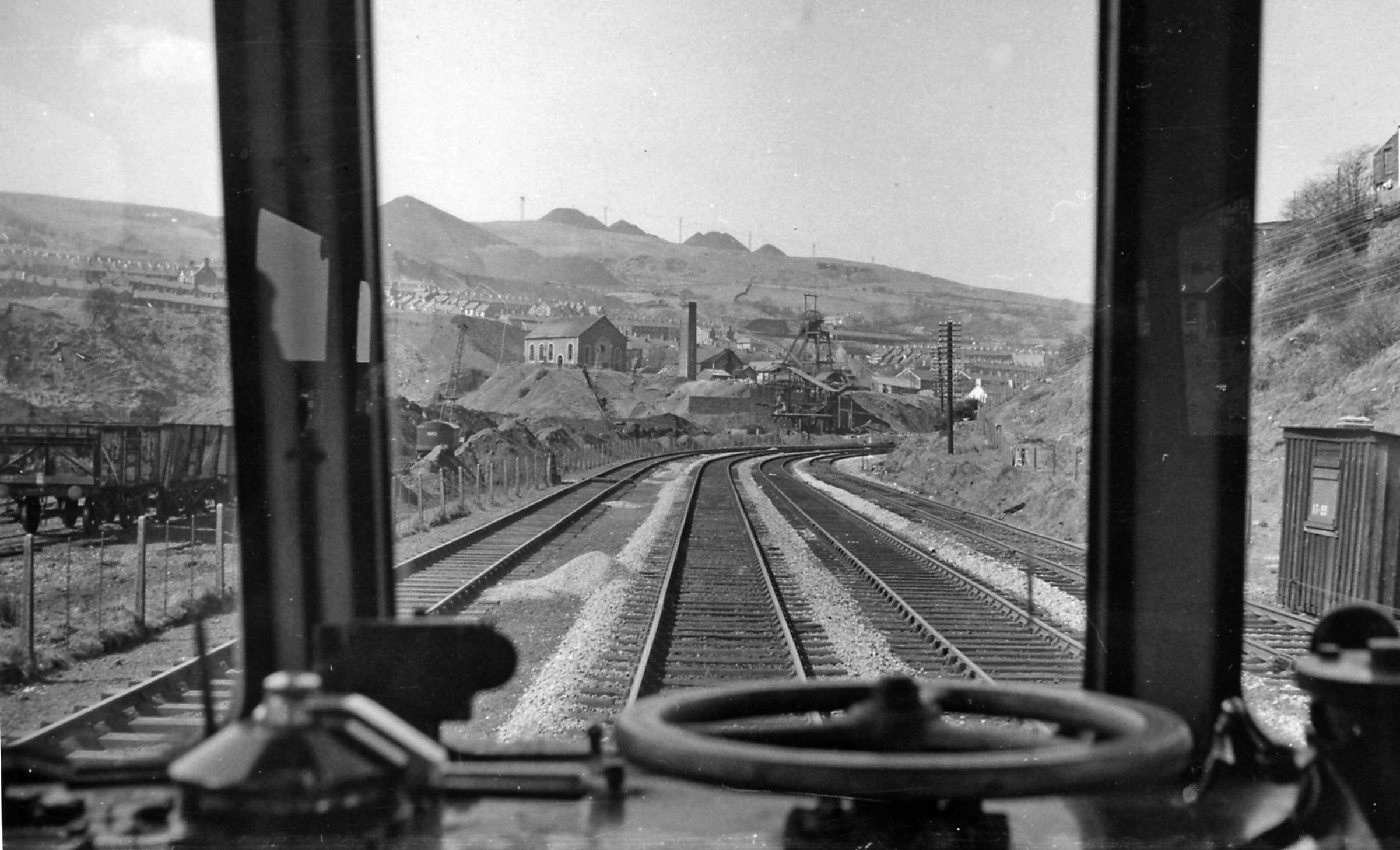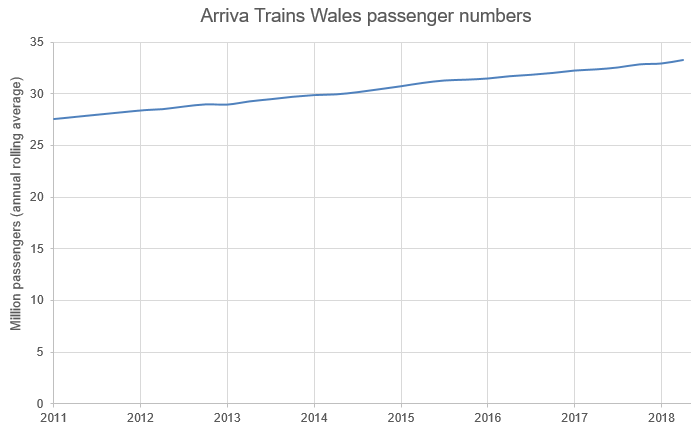|
Ystrad Rhondda Railway Station
Ystrad Rhondda railway station is a railway station serving Ystrad in Rhondda Cynon Taf, Wales. It is located on the Rhondda Line. Alphabetically, it is the last station in the UK with the first being Abbey Wood station in southeast London. History It was first opened on this site by British Rail on the former Taff Vale Railway in 1986 and is the location of the only passing loop on the section of route north of , which had previously been singled by British Rail in stages between 1972 and 1981. The loop points though work automatically, with the token machines for the two single line sections operated by the train crew under the remote supervision of the signalling centre at . Services Monday-Saturday, there is a half-hourly service to & southbound and to northbound. There is a two hourly service in each direction on Sundays, with through trains southbound to . On 20 July 2018, previous franchise operator Arriva Trains Wales announced a trial period of extra Sunday servi ... [...More Info...] [...Related Items...] OR: [Wikipedia] [Google] [Baidu] |
Ystrad Rhondda
Ystrad (also known as Ystrad Rhondda or Ystrad-Rhondda) is a village and community (and electoral ward) in the Rhondda Fawr valley, Rhondda Cynon Taf, Wales. Description As a community and ward Ystrad contains the neighbouring district of Gelli. Ystrad is a former coal mining village which was once housed the most profitable collieries belonging to the Cory brothers. Ystrad is long and narrow, a main road where most amenities can be found, and a series of smaller residential streets lined with the terraces associated with the area. The majority of housing stock is the classic South Wales valleys terrace with infills of new build. The Rhondda Fawr River runs through the village, separating it from Gelli on the southern bank. Like most former coal mining communities in the South Wales Coalfield, Ystrad is remarkably self-contained. There is a very strong community in Ystrad Rhondda - a common feature of these mining towns. The Ystrad Rhondda railway station is on the Rhond ... [...More Info...] [...Related Items...] OR: [Wikipedia] [Google] [Baidu] |
Taff Vale Railway
The Taff Vale Railway (TVR) was a standard gauge railway in South Wales, built by the Taff Vale Railway Company to serve the iron and coal industries around Merthyr Tydfil and to connect them with docks in Cardiff. It was opened in stages in 1840 and 1841. In the railway's first years, the coal mining industries expanded considerably and branches were soon opened in the Rhondda valleys and the Cynon Valley. The conveyance of coal for export and for transport away from South Wales began to dominate and the docks in Cardiff and the approach railway became extremely congested. Alternatives were sought and competing railway companies were encouraged to enter the trade. In the following decades further branch lines were built and the TVR used " motor cars" (steam railway passenger coaches) from 1903 to encourage local passenger travel. From 1922 the TVR was a constituent of the new Great Western Railway (GWR) at the grouping of the railways, imposing its own character on ... [...More Info...] [...Related Items...] OR: [Wikipedia] [Google] [Baidu] |
Railway Stations Opened By British Rail
Rail transport (also known as train transport) is a means of transport that transfers passengers and goods on wheeled vehicles running on rails, which are incorporated in tracks. In contrast to road transport, where the vehicles run on a prepared flat surface, rail vehicles (rolling stock) are directionally guided by the tracks on which they run. Tracks usually consist of steel rails, installed on sleepers (ties) set in ballast, on which the rolling stock, usually fitted with metal wheels, moves. Other variations are also possible, such as "slab track", in which the rails are fastened to a concrete foundation resting on a prepared subsurface. Rolling stock in a rail transport system generally encounters lower frictional resistance than rubber-tyred road vehicles, so passenger and freight cars (carriages and wagons) can be coupled into longer trains. The operation is carried out by a railway company, providing transport between train stations or freight customer facili ... [...More Info...] [...Related Items...] OR: [Wikipedia] [Google] [Baidu] |
DfT Category F1 Stations
The Department for Transport (DfT) is a department of His Majesty's Government responsible for the English transport network and a limited number of transport matters in Scotland, Wales and Northern Ireland that have not been devolved. The department is run by the Secretary of State for Transport, currently (since 25 October 2022) Mark Harper. The expenditure, administration and policy of the Department for Transport are scrutinised by the Transport Committee. History The Ministry of Transport was established by the Ministry of Transport Act 1919 which provided for the transfer to the new ministry of powers and duties of any government department in respect of railways, light railways, tramways, canals and inland waterways, roads, bridges and ferries, and vehicles and traffic thereon, harbours, docks and piers. In September 1919, all the powers of the Road Board, the Ministry of Health, and the Board of Trade in respect of transport, were transferred to the new ministry. ... [...More Info...] [...Related Items...] OR: [Wikipedia] [Google] [Baidu] |
Railway Stations In Rhondda Cynon Taf
Rail transport (also known as train transport) is a means of transport that transfers passengers and goods on wheeled vehicles running on rails, which are incorporated in tracks. In contrast to road transport, where the vehicles run on a prepared flat surface, rail vehicles (rolling stock) are directionally guided by the tracks on which they run. Tracks usually consist of steel rails, installed on sleepers (ties) set in ballast, on which the rolling stock, usually fitted with metal wheels, moves. Other variations are also possible, such as "slab track", in which the rails are fastened to a concrete foundation resting on a prepared subsurface. Rolling stock in a rail transport system generally encounters lower frictional resistance than rubber-tyred road vehicles, so passenger and freight cars (carriages and wagons) can be coupled into longer trains. The operation is carried out by a railway company, providing transport between train stations or freight customer facili ... [...More Info...] [...Related Items...] OR: [Wikipedia] [Google] [Baidu] |
Leanne Wood
Leanne Wood (born 13 December 1971) is a Welsh politician who served as the leader of Plaid Cymru from March 2012 to September 2018, and served as a Member of the Senedd (MS) from 2003 to 2021. Born in the Rhondda, she was elected as to the then National Assembly for Wales in 2003, representing South Wales Central until 2016, when she was elected for Rhondda. She lost her seat to Welsh Labour at the 2021 Senedd election. Ideologically, Wood identifies as a socialist, republican and proponent of Welsh independence. She was the first female leader of Plaid Cymru and the first to learn Welsh as an adult, rather than being brought up speaking Welsh. Early life Wood was born in Llwynypia Hospital on 13 December 1971, the daughter of Jeff and Avril (née James) Wood."Wood, Leanne" ''Who's Who 2014'', A & C Black, an imprint of B ... [...More Info...] [...Related Items...] OR: [Wikipedia] [Google] [Baidu] |
Arriva Trains Wales
Arriva Trains Wales (ATW; cy, Trenau Arriva Cymru) was a British train operating company owned by Arriva UK Trains that operated the Wales & Borders franchise. It ran urban and inter-urban passenger services to all railway stations in Wales, including , , , , and , as well as to certain stations in England such as , , , Crewe railway station, Crewe, and . In August 2003, Arriva UK Trains was awarded the newly created Wales & Borders franchise by the Strategic Rail Authority, Arrival Trains Wales began operation during December 2003, taking over from Wales and Borders. Following the implementation of the Railways Act 2005 and Transport (Wales) Act 2006, responsibility for the franchise was devolved to the Welsh Government, which worked closely with Arriva Trains Wales during its period of operations. Numerous service changes were made under the company's management; on 6 February 2008, the Ebbw Valley Railway was partially re-opened to passenger services for the first time in ... [...More Info...] [...Related Items...] OR: [Wikipedia] [Google] [Baidu] |
Token (railway Signalling)
In railway signalling, a token is a physical object which a train driver is required to have or see before entering onto a particular section of single track. The token is clearly endorsed with the names of the section it belongs to. A token system is more commonly used for single lines because of the greater risk of collision in the event of a mistake being made by a signaller or traincrew, than on double lines. Principle The operation of a bidirectional single track line has the hazard of two trains colliding. The simplest way to prevent such collisions is to have only one train in the section at any given time. Such a system is known as "one-engine-in-steam” (OES) or “one-train working" (OTW). This system is used on some branches of rail networks, and on heritage railways. The main disadvantage is that it restricts the number of train movements that can be made. For a larger railway system, it becomes exceptionally limiting in the level of operations that it allows, wi ... [...More Info...] [...Related Items...] OR: [Wikipedia] [Google] [Baidu] |
Passing Loop
A passing loop (UK usage) or passing siding (North America) (also called a crossing loop, crossing place, refuge loop or, colloquially, a hole) is a place on a single line railway or tramway, often located at or near a station, where trains or trams travelling in opposite directions can pass each other. Trains/trams going in the same direction can also overtake, provided that the signalling arrangement allows it. A passing loop is double-ended and connected to the main track at both ends, though a dead end siding known as a refuge siding, which is much less convenient, can be used. A similar arrangement is used on the gauntlet track of cable railways and funiculars, and in passing places on single-track roads. Ideally, the loop should be longer than all trains needing to cross at that point. Unless the loop is of sufficient length to be dynamic, the first train to arrive must stop or move very slowly, while the second to arrive may pass at speed. If one train is too long for ... [...More Info...] [...Related Items...] OR: [Wikipedia] [Google] [Baidu] |
British Rail
British Railways (BR), which from 1965 traded as British Rail, was a state-owned company that operated most of the overground rail transport in Great Britain from 1948 to 1997. It was formed from the nationalisation of the Big Four British railway companies, and was privatised in stages between 1994 and 1997. Originally a trading brand of the Railway Executive of the British Transport Commission, it became an independent statutory corporation in January 1963, when it was formally renamed the British Railways Board. The period of nationalisation saw sweeping changes in the railway. A process of dieselisation and electrification took place, and by 1968 steam locomotives had been entirely replaced by diesel and electric traction, except for the Vale of Rheidol Railway (a narrow-gauge tourist line). Passengers replaced freight as the main source of business, and one-third of the network was closed by the Beeching cuts of the 1960s in an effort to reduce rail subsidies. On privatis ... [...More Info...] [...Related Items...] OR: [Wikipedia] [Google] [Baidu] |







.jpg)